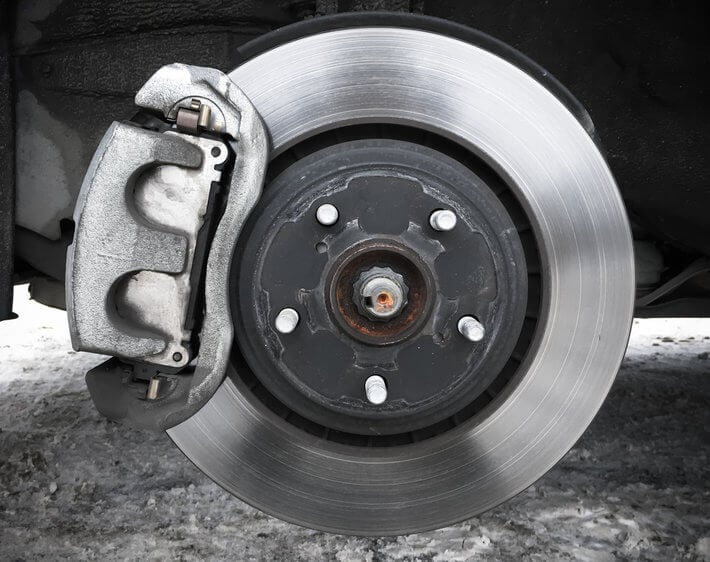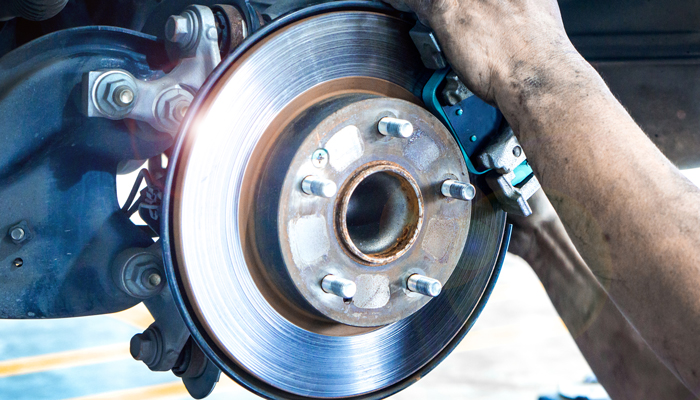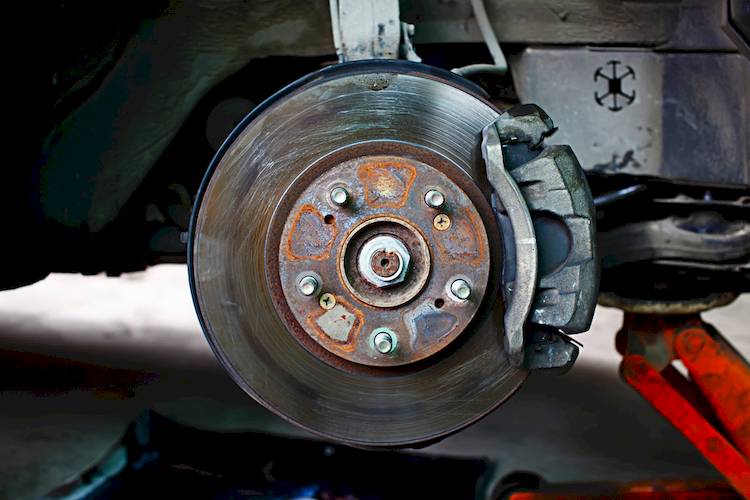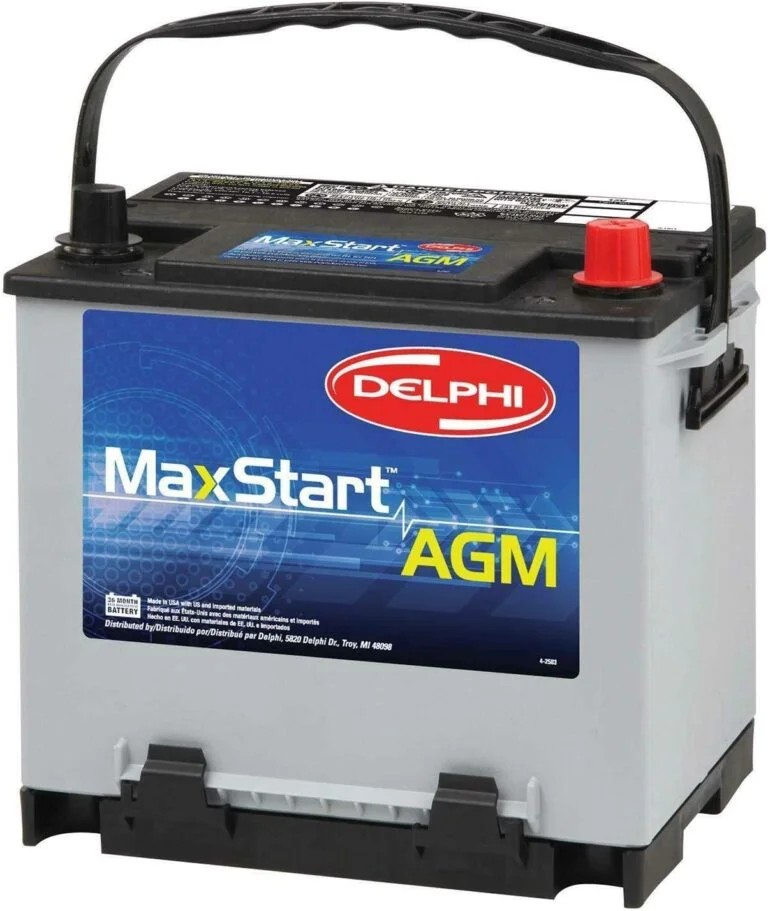How to Tell If a Brake Rotor is Bad
To determine if a brake rotor is bad, look for grooves or scoring on the surface. Examine for warping by spinning the rotor and inspecting for an uneven movement.
A bad brake rotor can cause pulsating brakes and decreased stopping power, jeopardizing your safety on the road. Neglecting rotor issues can lead to additional damage and costly repairs. Regular maintenance and prompt replacement can prevent further complications and ensure optimal brake performance.
Don’t ignore signs of a bad rotor to keep your vehicle running smoothly and safely. By staying vigilant and addressing any rotor problems promptly, you can maintain the efficiency and reliability of your braking system.

Credit: www.tiresplus.com
Common Signs Of A Bad Brake Rotor
`strange Noises`
`One of the most common signs of a bad brake rotor is the presence of strange noises when braking. If you hear squealing, grinding, or screeching sounds, it could indicate that the brake rotor is worn down or damaged. These noises can be a clear indicator that it’s time to have your brake system inspected by a professional.`
`vibration Or Pulsation In The Brake Pedal`
`Feeling vibration or pulsation in the brake pedal when coming to a stop can be a strong indication of a bad brake rotor. The pulsating sensation can often be felt as you apply the brakes, suggesting that the rotor may be warped or unevenly worn. If you notice this sensation, it’s essential to address it promptly to ensure safe driving conditions.`
`uneven Braking`
`An indicator of a bad brake rotor can be uneven braking, where your vehicle might pull to one side when braking, or you may experience a lack of responsiveness from the brakes. This uneven braking can be a result of a warped or worn brake rotor, causing an imbalance in the distribution of braking force. Addressing this issue promptly is crucial for optimal brake performance.`
`excessive Heat Or Burning Smell`
`If you notice excessive heat emanating from the wheels or a burning smell after braking, it could signal a problem with the brake rotor. Overheating of the rotor can lead to a burning odor, indicating that the brake system is being overworked and potentially causing damage. Addressing this promptly is crucial to prevent further deterioration of the brake system.`
Causes Of Brake Rotor Problems
Brake rotor problems can be caused by wear and tear, overheating, or improper installation. Look for signs such as vibrations, squeaking, or reduced braking performance to determine if your brake rotor is bad.
Worn Brake Pads
Brake rotor issues can arise due to worn brake pads, leading to metal-on-metal contact.
Overheating
Overheating is a common cause of brake rotor problems, resulting from excessive friction.
Corrosion
Corrosion can weaken brake rotors, making them less effective in stopping the vehicle.
Improper Installation
Improper installation of brake rotors can cause issues like uneven wear and pulsation.
Methods To Inspect Brake Rotors
Inspecting brake rotors is essential for ensuring safe driving. Let’s explore Methods to Inspect Brake Rotors.
Visual Inspection
Begin by visually examining the brake rotor for any visible signs of damage, such as deep grooves or uneven wear patterns.
Look for excessive rust or corrosion, which can indicate potential issues with the rotor’s integrity.
Measuring Thickness
Using a caliper, measure the thickness of the brake rotor. Check against the manufacturer’s specifications to ensure adequate thickness for safe braking.
Replace the rotor if it is below the recommended thickness to prevent braking problems.
Checking For Cracks And Warping
Inspect the rotor for any cracks or signs of warping. Run your fingers along the rotor’s surface to detect any irregularities.
If you notice any cracks or warping, it is crucial to replace the rotor to prevent braking issues.

Credit: mtaq.com.au
Steps To Determine If Brake Rotors Need Replacement
Ensuring the safety and performance of your vehicle is crucial, and one key component to keep an eye on is the brake system. Brake rotors play a vital role in stopping your vehicle, and it’s essential to know how to tell if they are in need of replacement. Here are the steps to help you determine if your brake rotors are bad:
Take A Test Drive
Before performing any examination, take your vehicle for a short test drive to observe for any unusual sounds or vibrations during braking. These signs may indicate potential issues with the brake rotors.
Examine The Rotor Surface
After the test drive, visually inspect the surface of the brake rotors for any signs of damage or wear. Look for scored or grooved surfaces, which can indicate a need for replacement.
Use A Micrometer To Measure Thickness
Measure the thickness of the rotor using a micrometer. Compare the measurement to the manufacturer’s specified minimum thickness. If the rotor is below this threshold, it should be replaced to ensure safety and optimal performance.
Check For Cracks And Warping
Inspect the rotor closely for any cracks or warping. These issues can lead to ineffective braking and should prompt immediate replacement.
Brake Rotor Maintenance And Prevention
One way to determine if a brake rotor is bad is to listen for squeaking, grinding, or groaning sounds when applying the brakes. Additionally, if the vehicle vibrates or shakes while braking, it might indicate a problem with the rotor.
Regular inspection and maintenance can prevent these issues from worsening.
Regular brake rotor maintenance is crucial to ensure the optimal performance and longevity of your braking system. By taking proper care of your brake rotors, you can avoid unnecessary repairs and replacements, and most importantly, ensure your safety on the road. This section will cover some essential tips and practices for maintaining and preventing issues with your brake rotors.
Regular Brake Pad Inspection And Replacement
- Inspect your brake pads frequently to ensure they have sufficient thickness remaining.
- Replace the brake pads if they are less than the manufacturer’s recommended thickness.
- Regularly inspecting and replacing worn brake pads can help prevent uneven wear on the brake rotors.
Avoiding Excessive Braking
- Try to avoid unnecessary and excessive braking, as it can generate excessive heat and put additional stress on the brake rotors.
- Anticipate traffic conditions and maintain a safe distance from the vehicle ahead to reduce the need for sudden and aggressive braking.
- By practicing smooth and gradual braking, you can minimize wear and tear on your brake rotors.
Ensuring Proper Installation
- When installing new brake rotors, make sure they are properly cleaned and free from any contaminants.
- Follow the manufacturer’s instructions for proper torque specifications to ensure correct installation.
- Improperly installed brake rotors can cause vibration, noise, and premature wear.
Addressing Braking Issues Promptly
- If you notice any signs of braking issues such as squeaking, grinding, or a pulsating brake pedal, address them promptly.
- Delaying brake repairs can lead to further damage to the brake rotors and other components of the braking system.
- Regular maintenance and addressing issues early on can save you from more costly repairs down the road.
By following these preventive measures and maintaining your brake rotors regularly, you can extend their lifespan and ensure optimal braking performance. Remember to stay vigilant and address any issues promptly to keep yourself and others safe on the road.

Credit: www.yourmechanic.com
Frequently Asked Questions For How To Tell If A Brake Rotor Is Bad
How Do I Know When My Rotors Need Replacing?
You will know when your rotors need replacing if you notice vibration, noise, or reduced braking performance. Inspect them regularly.
What Are The Signs Of Bad Rotors?
Signs of bad rotors include vibration while braking, squealing noises, increased stopping distance, and uneven brake pad wear.
How Do You Check Rotors?
To check rotors, start by inspecting for any visible damage or wear. Then measure the rotor’s thickness to ensure it’s within the specified limits. Next, check for any warping or uneven wear using a dial indicator. Finally, ensure the rotor is securely attached and spins freely without any obstructions.
What Does A Bad Rotor Sound Like?
A bad rotor may produce a squealing or grinding noise when braking.
How Do You Know If Your Brake Rotor Is Bad?
If you feel a pulsating sensation when applying the brakes or hear a grinding noise, it may indicate a bad brake rotor.
What Causes A Brake Rotor To Go Bad?
Brake rotors can go bad due to wear and tear, overheating, uneven brake pad wear, or corrosion.
Can You Drive With A Bad Brake Rotor?
It is not recommended to drive with a bad brake rotor as it can affect your vehicle’s braking performance and safety.
Conclusion
In sum, being able to identify bad brake rotors is crucial for your vehicle’s safety and performance. Regular inspections and paying attention to warning signs will help you catch potential issues early on. By addressing brake rotor problems promptly, you can ensure your vehicle’s optimal functionality and prevent costly repairs down the line.

